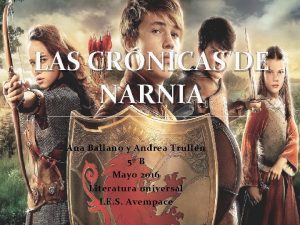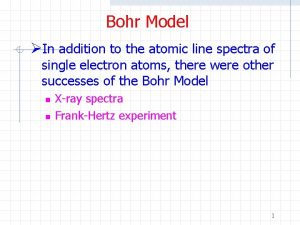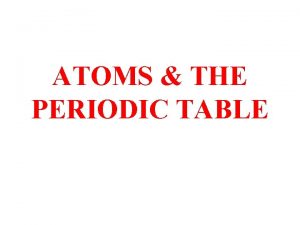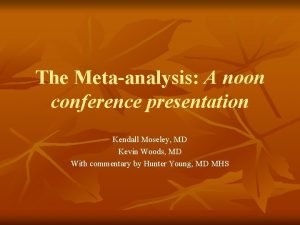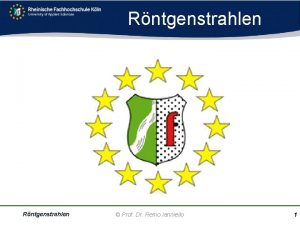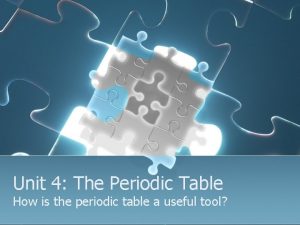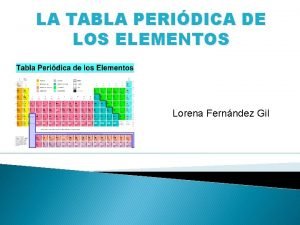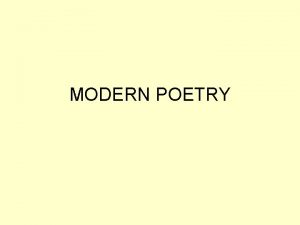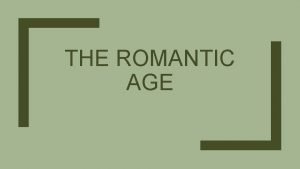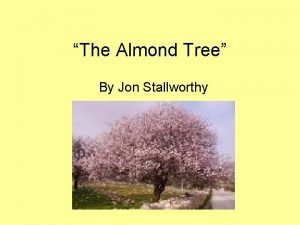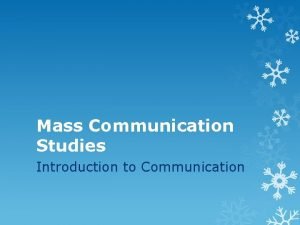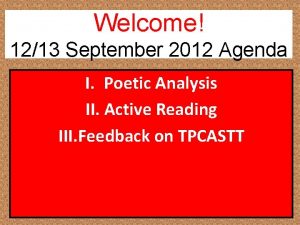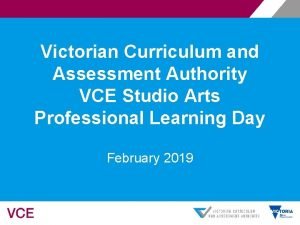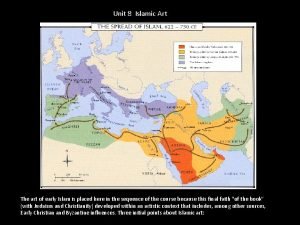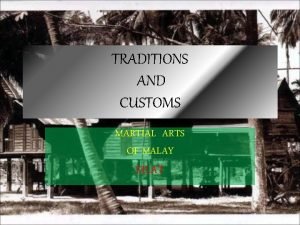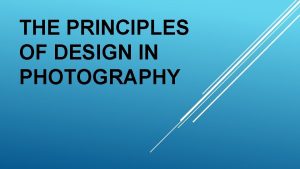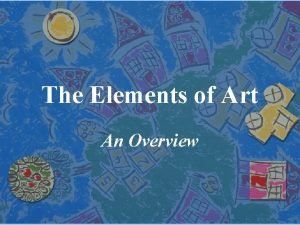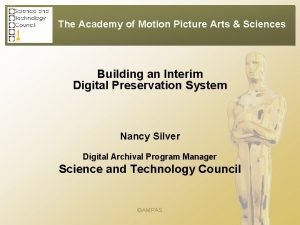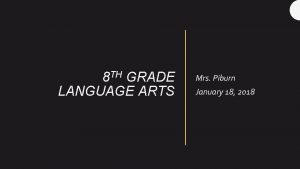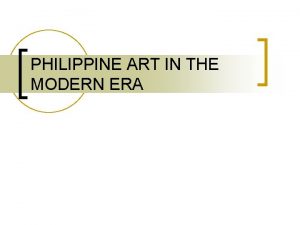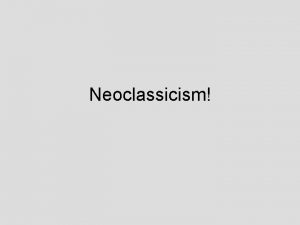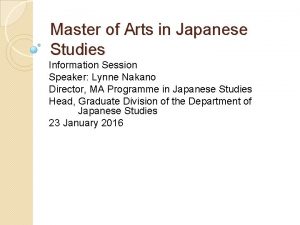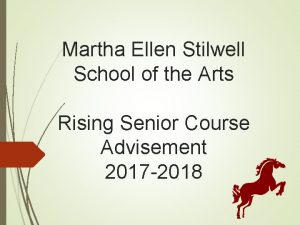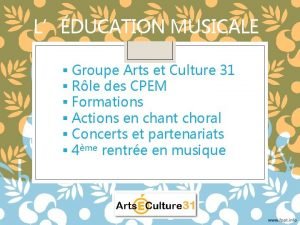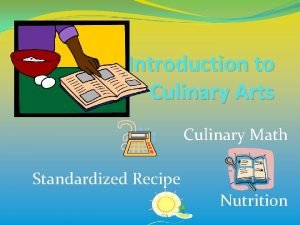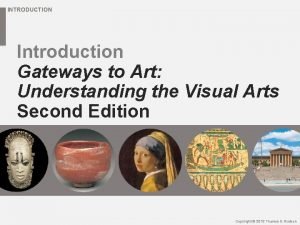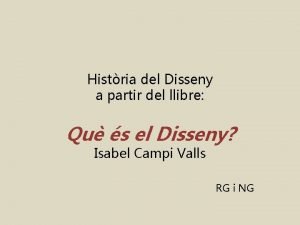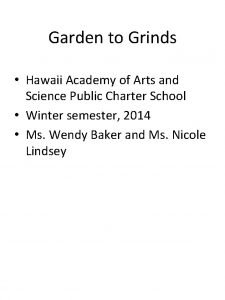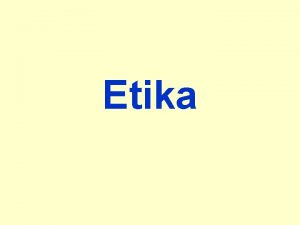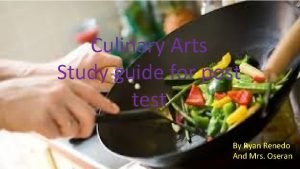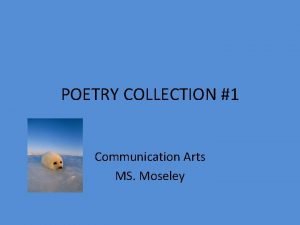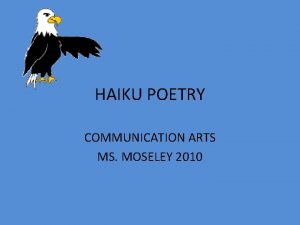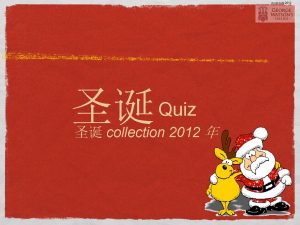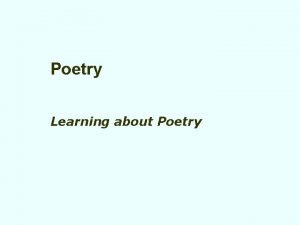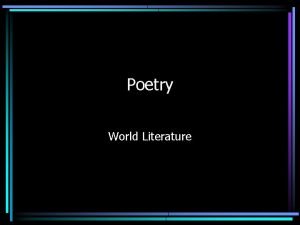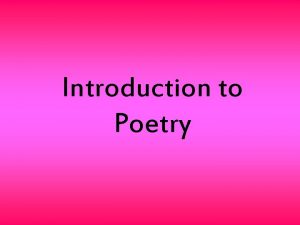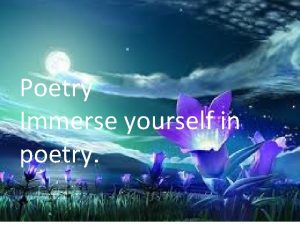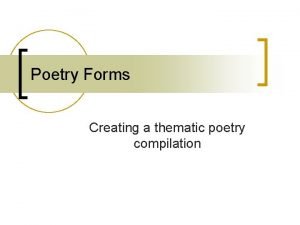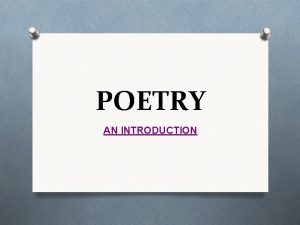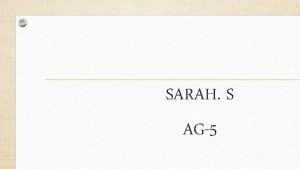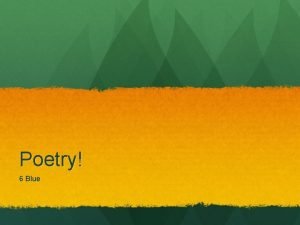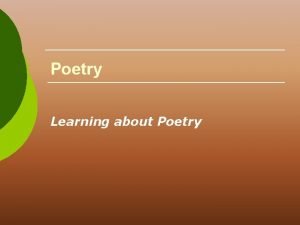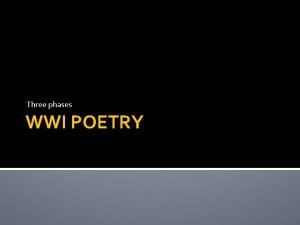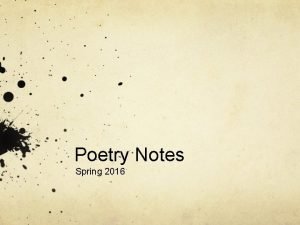POETRY COLLECTION 2 Communication Arts M MOSELEY 2012






















































- Slides: 54

POETRY COLLECTION #2 Communication Arts M. MOSELEY 2012

SOMETHING TOLD THE WILD GEESE BY: Rachel Field

SOMETHING TOLD THE WILD GEESE Something told the wild geese It was time to go. Though the fields lay golden Something whispered, ---- “Snow. ” Leaves were green and stirring, Berries, luster-glossed, But beneath warm feathers Something cautioned, ---- “Frost. ”

All the sagging orchards Steamed with amber spice, But each wild breast stiffened At remembered ice. Something told the wild geese It was time to fly, ---Summer sun was on their wings, Winter in their cry.

Recalling: • What did “something” tell the wild geese? • What did “something” whisper to them? • What did it caution? • What was on the geese’s wings? • What was in their cry? • What is the IMPLIED THEME of this poem?

Interpreting: • To what does “something” refer? • In what season is this poem set? • Which details tell you so? Extending: • What sounds, tastes, and smells do you associate with each of the seasons?

TOMORROW IS TODAY Along the way we set a goal To take back what was ours that the other team stole To break tradition and get what we need To be called champions after our heroic deed

A rare group of athletes can get it done A lost championship being won making all of the supportive fans scream As we fulfilled our one childhood dream A heart-pumping game with incredible pace Can make even the best athlete seem out of place Shooting, dribbling, jumping at amazing heights Requires skill and practice every intense night

Only blood, sweat, and tears you’ll find Because only thoughts of triumph cross our mind No more upsets or tears of sorrow No more wishing for another tomorrow There will be only one moment to embrace Receiving medals together with honor and grace Staying in this moment forever still But remembering all those challenging drills

A rare group of athletes got it done A lost championship was won Making all the supportive fans scream Because we fulfilled our one childhood dream Cassie Larocque Saint Patrick School Pelham, NH

1 – PERFECT RHYMES – This poem has several sets of perfect rhymes – Words that sound exactly alike except for the first consonant sounds – for example: be, three, key

CAT Cat! Scat! After her, after her. Sleeky flatterer, Spitfire chatterer, Scatter her, scatter her Off her mat! Wuff!

Wuff! Treat her rough! Git her, git her, Whiskery spitter! Catch her, catch her. Green-eyed scratcher! Slathery Slithery Hisser, Don’t miss her!

Run till you’re dithery, Hithery Thithery Pftts! pftts! How she spits! Spitch! Spatch! Can’t she scratch! Scritching the bark Of the sycamore tree, She’s reached her ark

And’s hissing at me Pftts! pftts! Wuff! wuff! Scat, Cat! That’s That! By: Eleanor Farjeon

ONOMATOPOEIA This poem uses: 2) Onomatopoeia – The use of a word or phrase that actually imitates or suggests the sound of what it describes. For example – the word hiss sounds exactly like what it means – “the sound of an angry cat”. Other examples include: whinny, cluck, sizzle, buzz, hum, screech

TOPIC 3) TOPIC – The broad subject an author writes about in a piece of literature. Cat would be the broad subject or TOPIC of this poem.

THESAURUS When writing poetry, it might be helpful to use a 4)THESAURUS – A book filled with synonyms. You may find a word that means the same thing as the word you need, but rhymes with the other line in your poem. 5) ETYMOLOGY – The origin of a word. You can find the origin of a word in a dictionary.

THE MAGNIFICENT BULL My bull is white like the silver fish in the river white like the shimmering crane bird on the river bank white like fresh milk! His roar is like thunder to the Turkish cannon on the steep shore. My bull is dark like the raincloud in the storm He is like summer and winter.

Half of him is dark like the storm cloud, half of him is light like sunshine. His back shines like the morning star. His brow is red like the beak of the Hornbill. His forehead is like a flag, calling the people from a distance, He resembles the rainbow. I will water him at the river, With my spear I shall drive my enemies.

Let them water their herds at the well; the river belongs to me and my bull. Drink, my bull, from the river; I am here to guard you with my spear. Dinka Traditional

6) SIMILE – A direct comparison of two seemingly unlike things using a comparing word such as like or as. Example: The little girl wore a dress as yellow as the morning sunshine. List five similes from the poem “The Magnificent Bull”.

7) END-STOPPED LINE – A line in a poem in which a pause occurs naturally at the end of the line. An end-stopped line that ends with a colon, period, question mark, or exclamation point requires the reader to stop completely before going on to the next line. An endstopped line that ends with a comma, semicolon, or dash directs the reader to pause for a brief time before continuing.

MODIFIERS 8) MODIFIERS – Words or groups of words that describe or limit other words. They often help to make the meaning of the main words vivid and exact. Modifiers make images easier to picture by adding number, color, or other information about the senses. Look carefully at the following phrases: seven blue billowy, fluffy, floating clouds the still, glassy, shimmering water of the lake

POEM As the cat climbed over the top of the jamcloset first the right forefoot

carefully then the hind stepped down into the pit of the empty flowerpot. William Carlos Williams

9) RUN-ON LINES – A line without an end stop is called a run-on line, because its meaning is contained in more than a one-line unit. In a run-on line the meaning is carried over from one line to the next. Sometimes it takes several lines to complete one thought. “Poem” contains one thought that takes 12 lines to complete. Therefore, it is a good example of run-on lines.

COLLAGE 10) COLLAGE – A picture made from assembling scraps of material. PANTOMIME 11) PANTOMIME – To act without words the actions described in a piece of writing.

THE RIVER IS A PIECE OF SKY From the top of a bridge The river below Is a piece of sky – -- Until you throw -- A penny in -- Or a cockleshell -- Or a pebble or two -- Or a bicycle bell

-- Or a cobblestone -- Or a fat man’s cane – And then you can see It’s a river again. The difference you’ll see When you drop your penny: The river has splashes, The sky hasn’t any. By: John Ciardi

CONCRETE LANGUAGE 12) CONCRETE LANGUAGE – Specific words and phrases used by poets to describe images for the reader. Poets intentionally use concrete language instead of abstract language or general words.

A SONG OF GREATNESS When I hear the old men Telling of heroes, Telling of great deeds Of ancient days – When I hear that telling, Then I think within me I, too, am one of these.

When I hear the people Praising great ones, Then I know that I too – Shall be esteemed; I, too, when my time comes Shall do mightily. Chippewa Traditional

THEME & IMPLIED THEME 13) THEME – The central idea of a literary work, usually expressed as a generalization about life. 14) IMPLIED THEME – A theme that gradually becomes clear as the poem unfolds. You can figure out an implied theme by paying attention to the title, examples, or supporting details and by thinking about the poet’s purpose in writing.

What is the THEME of the poem “A Song of Greatness”? Is it IMPLIED or STATED DIRECTLY? Support you answer with details from the poem.

LIFE FOR MY CHILD IS SIMPLE, and IS GOOD Life for my child is simple, and is good. He knows his wish. Yes, but that is not all. Because I know mine too. And we both want joy of undeep and unabiding things. Like kicking over a chair or throwing blocks out of a window

Or tipping over an icebox pan Or snatching down curtains or fingering an electrical outlet Or a journey or a friend or an illegal kiss. No. There is more to it than that. It is that he has never been afraid. Rather, he reaches out and lo the chair falls with a beautiful crash, And the blocks fall, down on the people’s heads,

And the water comes slooshing sloppily out across the floor. And so forth. Not that success, for him, is sure, infallible. But never has he been afraid to reach. His lesions are legion. But reaching is his rule. By: Gwendolyn Brooks

STATED THEME 15) STATED THEME – A theme that the author states directly in a poem. THEME – The main idea of a piece of literature is usually a statement that expresses the author’s attitude about life. What is the stated theme of this poem?

I’M NOBODY! WHO ARE YOU? I’m nobody! Who are you? Are you nobody, too? Then there’s a pair of us, you know. How dreary to be somebody! How public like a frog To tell your name the livelong day To an admiring bog! By: Emily Dickinson

LYRIC POEM – A brief, often musical expression of the poet’s thoughts and feelings. It may follow a variety of forms, but its main purpose is to communicate the emotions of the poet. Most lyric poems use vivid images and imaginative similes and metaphors. Lyric poems are usually about a particular thing – a moment, a feeling, a memory – that stirs the poet’s imagination.

“I’m Nobody! Who Are You” is a LYRIC POEM. The word lyric comes from lyre the guitarlike instrument poets played when they sang their poems many centuries ago.

LIMERICK 16) LIMERICK - A humorous five-line poem that follows a specific form. It has three long lines and two short lines. Lines 1, 2, and 5 rhyme with each other. Lines 3 and 4 rhyme with each other. The following poem is a limerick.

THERE WAS AN OLD MAN OF PERU There was an old man of Peru Who dreamed he was eating a shoe. He awoke in the night With a terrible fright And found it was perfectly true!

HAIKU 17) HAIKU - A haiku is a three line poem, usually about nature. The entire poem contains just seventeen syllables, five in the first line and the third line and seven in the second line. The form was developed in Japan in the seventeenth century. A haiku usually presents one or two vivid images without direct comment but often with a suggestion of a deeper meaning. The following is an example of a HAIKU.

BAMBOO GROVE Railroad tracks; a flight of wild geese close above them in the moonlit night.

CONCRETE POEM 18) CONCRETE POEM – A concrete poem is shaped to look like its subject. In concrete poems the placement of letters, words, lines, spaces, and punctuation creates a strong visual effect. Example: The poster with the butterfly poem at the front of the room.

NARRATIVE POEM 19) NARRATIVE POEM – A poem that tells a story in verse. “The Highwayman” and “Annabel Lee” are both NARRATIVE POEMS. 20) CHRONOLOGICAL SEQUENCE – The order in which the events happen in time. Narrative poems are often told in CHRONOLOGICAL SEQUENCE.

TO A GOLDEN-HAIRED GIRL IN A LOUSIANA TOWN You are a sunrise, If a star should rise instead of the sun. You are a moonrise, If a star should come, in the place of the moon. You are the Spring. If a face should bloom, Instead of an apple-bough.

You are my love If your heart is as kind As your young eyes now. By: Vachel Lindsay 21) FIGURATIVE LANGUAGE – Words that make unusual comparisons or create unexpected effects. Similes, metaphors, and personification are all examples of FIGURATIVE LANGUAGE. This language is not meant to be taken literally. (Example: Go fly a kite)

The poem “To a Golden-Haired Girl In a Louisiana Town” is full of FIGURATIVE LANGUAGE. How many METAPHORS can you find in the poem?

FLOWER-FED BUFFALOES The flower-fed buffaloes of the spring In the days of long ago, Ranged where the locomotives sing And the prairie flowers lie low – The tossing, blooming, perfumed grass Is swept away by wheat, Wheels and wheels spin by

In that spring that still is sweet, But the flower-fed buffaloes of the spring Left us long ago. They gore no more, they bellow no more, They trundle around the hills no more, With the Blackfeet, lying low, With the Pawnees, lying low. Lying low. By: Vachel Lindsay

MOOD 22) MOOD – The feeling, or atmosphere, that runs through a poem as you read it. What is the MOOD of this poem? Why? 23) DESCRIPTION – The type of writing that creates a clear picture of something – a person, animal, object, place, or event. Many poems are full of descriptive writing.
 Creative art grade 8
Creative art grade 8 Mendeleev and moseley
Mendeleev and moseley William moseley desnudo
William moseley desnudo Franck hertz
Franck hertz Polonium reactivity
Polonium reactivity Mendeleev moseley
Mendeleev moseley Kendall moseley
Kendall moseley Proprietà periodiche
Proprietà periodiche Remo ianniello
Remo ianniello Periodic table groups
Periodic table groups Moseley periodic table
Moseley periodic table Dimitri mendeleiev tabla periodica
Dimitri mendeleiev tabla periodicaSir james chadwick atomic theory
 Landsat collection 1 vs collection 2
Landsat collection 1 vs collection 2 Documentary collection vs documentary credit
Documentary collection vs documentary credit Chulalongkorn university faculty of arts
Chulalongkorn university faculty of arts Neoclassical and romantic poetry
Neoclassical and romantic poetry Traditional poetry vs modern poetry
Traditional poetry vs modern poetry Medias res
Medias res Augustan age and romanticism
Augustan age and romanticism Jon stallworthy the almond tree
Jon stallworthy the almond tree Parallel and serial port
Parallel and serial port What is oral communication and written communication
What is oral communication and written communication Parallel communication examples
Parallel communication examples Types of nonverbal communication chronemics
Types of nonverbal communication chronemics Diff between oral and written communication
Diff between oral and written communication Serial communication vs parallel communication
Serial communication vs parallel communication Musee des beaux arts analysis
Musee des beaux arts analysis Visual arts extended essay examples
Visual arts extended essay examples Studio arts study design
Studio arts study design Islamic portable arts
Islamic portable arts Martial arts in malay
Martial arts in malay Surf coast art space
Surf coast art space Rhythm photography definition
Rhythm photography definition Kyiv national university of culture and arts
Kyiv national university of culture and arts 5 elements art
5 elements art Academy of motion picture arts and sciences benefits
Academy of motion picture arts and sciences benefits Language arts
Language arts Queens college of arts and science thanjavur
Queens college of arts and science thanjavur Queens college thanjavur courses
Queens college thanjavur courses Modern period art in the philippines
Modern period art in the philippines Characteristics of neoclassical
Characteristics of neoclassical Monash law exchange
Monash law exchange Master of arts in japanese
Master of arts in japanese Martha ellen stilwell school of the arts
Martha ellen stilwell school of the arts Los angeles harbor college nursing
Los angeles harbor college nursing Arts et culture 31
Arts et culture 31 Why is math important in culinary arts
Why is math important in culinary arts Reverie allan houser
Reverie allan houser Llibres de disseny i arts decoratives
Llibres de disseny i arts decoratives Analyse du tableau guernica histoire des arts
Analyse du tableau guernica histoire des arts Hegel philosophy of fine art summary
Hegel philosophy of fine art summary Hawaii academy of arts and science
Hawaii academy of arts and science Jótékonyság elve
Jótékonyság elve Culinary arts study guide
Culinary arts study guide


